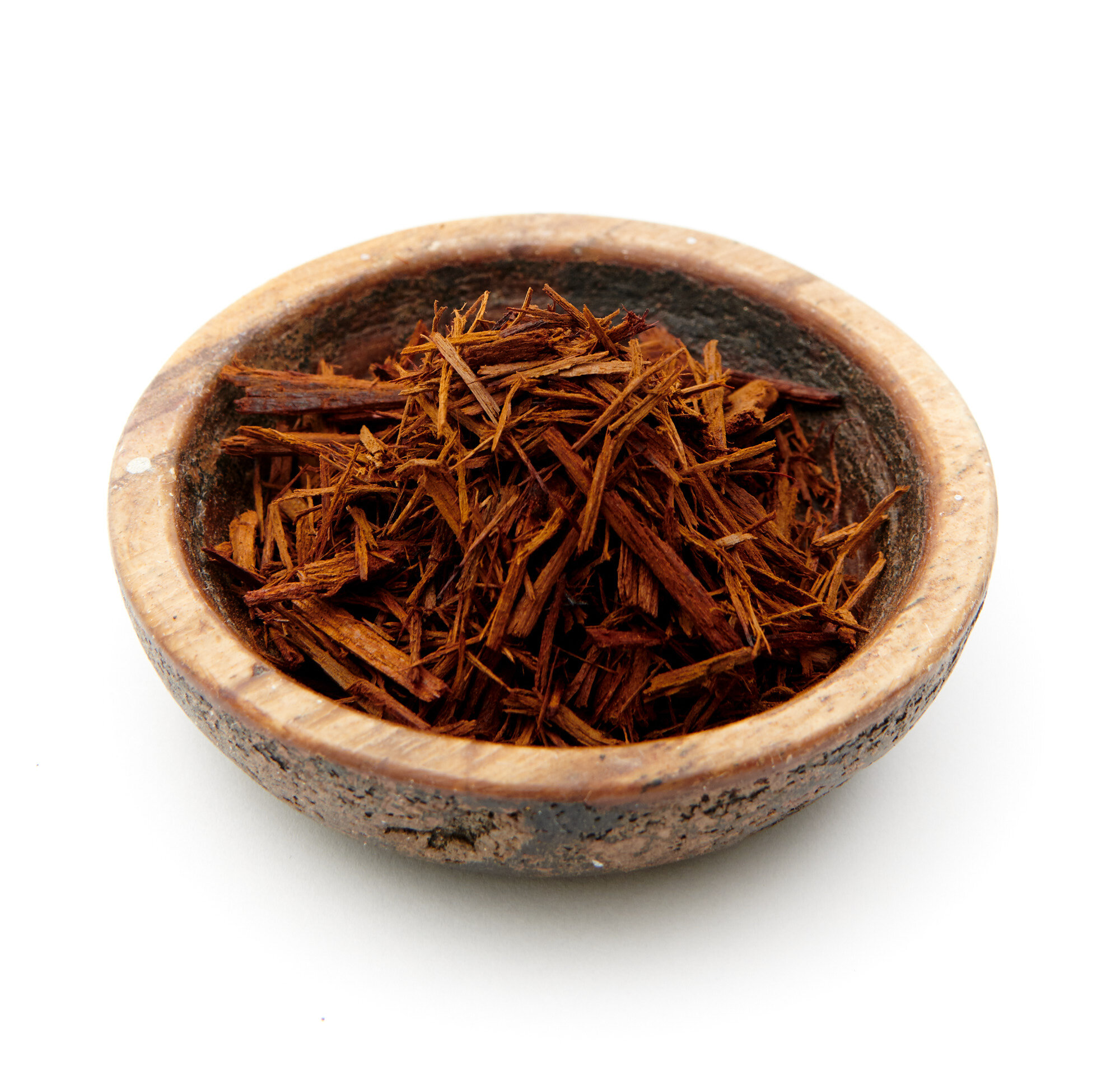Logwood
Haematoxylon campechianum
Logwood - The heartwood of Haematoxylum campechianum. Logwood yields deep, rich, red-purples to orchid blues and has been prized as a dyestuff since the 16th century. The logwood tree grows in Mexico, Central America, The Dominican Republic, Venezuela, Brazil, the Guyannas, Madagascar, and India. When mixed with iron, logwood gives good blacks – a colour difficult to achieve with natural dyes. Logwood has good washfastness but moderate lightfastness – a bit of iron improves the lightfastness dramatically.
See the MAIWA GUIDE TO NATURAL DYES
Mordanting: Use alum mordant at 15% WOF for protein fibres. For cellulose, first mordant with tannin at 8% WOF, then either 1) use alum at 15% with soda ash at 2% or 2) use aluminum acetate at 8%.
Dyeing with the extract: Use at 1-2% WOF for a medium shade.
Dyeing with the wood: Logwood chips will give a medium depth of shade at 10-15% WOF. Pour enough boiling water over the logwood to make a dyebath and soak overnight. Pour off this liquid and use for the first (and strongest) dyebath. Simmer fibres for about one hour, keeping the temperature between 77-83ºC (170-180ºF). If a darker colour is required leave fibres in dyebath overnight. The logwood chips can be soaked again and the liquid used for lighter shades.
Logwood develops best in slightly hard water. Adding finely ground chalk (or a Tum’s tablet) brightens the logwood colour, especially if there is no lime in the local water. Cream of tartar can be added (at approximately 6% WOF) to push logwood to a purple-navy, adding osage or fustic gives grey-greens, cochineal gives purples, coffee bean browns are obtained by adding cutch, navy can be had with a dip in indigo, greys to blacks are made with the addition of iron.
Below: Logwood Extract 1% WOF






